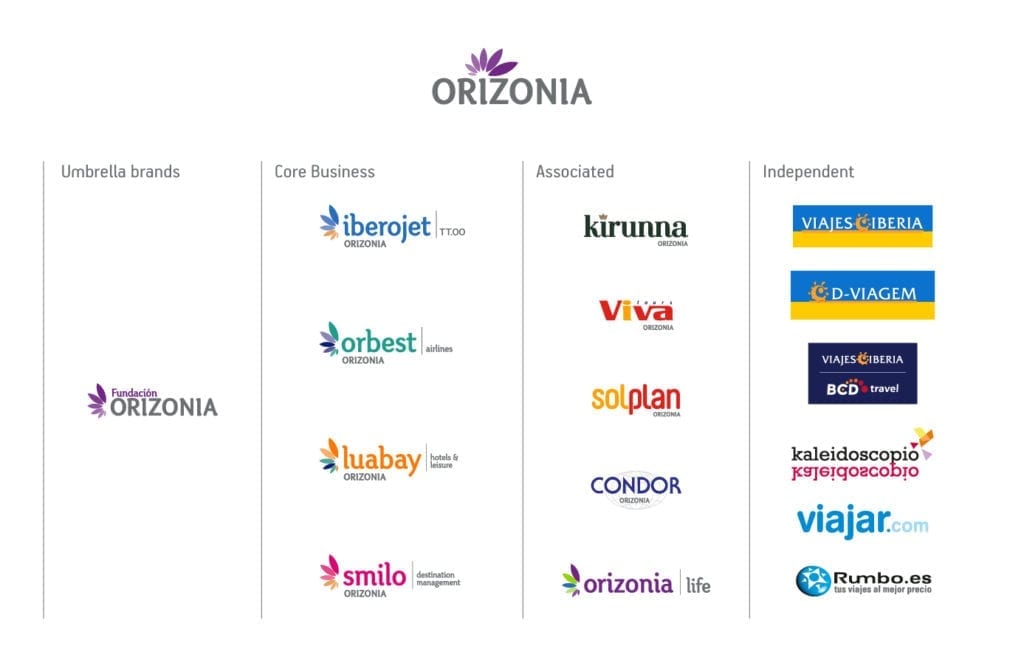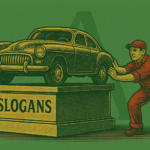Most people are very brand conscious and only buy goods that are from familiar brands. If you agree with this, then you must understand that brand architecture is an essential element of marketing and building a brand.
The name, recognition, and equity of your brand is your identity that helps you stand out in the market against competitors.
Table of Contents
What is the Brand Architecture?
Brand architecture is a way to organize a company’s brands, products, and services such that they are prominent in their audience’s sight.
The brand architecture also relates a parent company with its subsidiaries, products, and services. For example, Toyota needs brand architecture to relate to its subsidiaries, which are: Lexus, Daihatsu, Subaru and so on.
Brand Architecture types

There are mainly three types of brand architecture:
1. Branded house
Also known as Monolithic type, the branded house is the case where the master brand has its original name and logo while the other products that follow, are extensions to the master brand. The extensions’ names usually start with the name of the master brand, and the logo is similar to the master brand’s logo with, maybe, different color scheme. A very famous example of the branded house is Google. Google was primarily a search engine, but now it owns several other services too, for example, Google Groups, Gmail, Google photos, Google play music, Google games, Google analytics, Google finance, Google drive, Google maps and so on.
Another one of brand architecture examples under the branded house is FedEx. The master brand, FedEx provides courier services, but there are other services provided by FedEx too, for example, FedEx express, FedEx trade networks, FedEx SmartPost, FedEx ground and so on. Both mentioned examples have the master brand’s name and logo in their extensions.
2. House of brands
Also known as the pluralistic type, house of brands is the case where there are several other brands under the master brand. The master brand, itself, might or might not be manufacturing anything under its brand name. Proctor and Gamble, Unilever, Reckitt Benckiser and Nestle are all brand architecture examples under the house of brands type. Proctor & Gamble is not a product itself, but it has subsidiaries like Gillette, Braun, Ariel, Crest and so on. Similarly, Unilever; it also has other subsidiaries under it including Axe, Dove, Knorr, Ben & Gerry’s and so on.
3. Hybrid
Also known as the endorsing type, the hybrid is a case which uses the advantages of both, the branded house and the house of brands. The master brand may or may not have a close relationship with the sub-brands, but they are somehow related. A very famous example of this type is that of Volkswagen. Volkswagen owns Audi, Lamborghini, Bentley, Bugatti, Skoda, Ducati and so on, while manufacturing vehicles under its name too. Another example is of Toyota; Toyota owns Daihatsu, Lexus, Scion, Subaru, Hino and so on.
Key terms related to brand architecture
Brand design
Talking about branding, it is compulsory to talk about how a company makes it possible to be viewed by its audience in a way it wants to be viewed. It is through brand design. Brand design includes a logo, name, style, and visuals which are used to transmit a message to the audience about a brand. Of course, the product keeps worth too, but it is not just the product that makes a brand. A famous example here is of Oreo. Oreo is a cookie originally made by Nabisco (Mondelez International).
However, it is an international brand now and is made by many companies. Oreo has become a brand, and even though the taste of different company-made Oreos differs, the logo and the packaging remain constant.
Brand personality
Brand personality is the human traits associated with the brand. It determines how a customer interacts with your brand and whether he buys the product or not. Brands are given adjectives such as kind, happy, brave, funny, honest, caring, unique and so on, to make them more understandable to the audience. There are mainly five types of brand personalities: excitement, sincerity, ruggedness, competence, and sophistication.
Brand archetypes
Brand archetype is closely related to brand personality. Developed by Karl Jung, brand archetypes are 12 in total. They are The innocent, the hero, the regular guy, the caregiver, the creator, the explorer, the rebel, the lover, the ruler, the jester, the magician and the sage.
Each of these demonstrates a different set of characteristics that define a product. For example, McDonald’s is the innocent, Nike is the hero, Vodafone is the regular guy, Heinz is the caregiver, Canon is the creator, the North face is the explorer, Harley Davidson is the rebel, Galaxy chocolate is the lover, Rolex is the ruler, Skittles is the Jester, Disney is the magician, and Audi is the sage.
All the brands that are mentioned have the characteristics of that archetype which is mentioned with them.
Brand promise
A brand promise is what a brand promises to provide to its customers. These promises are made through advertisements, packaging, campaigns and so on. For example, IKEA promises “To provide well-designed quality products at an affordable price.” Another example is of Britannia, saying “Eat healthily, think better.” Here, Britannia is trying to promise its customers of providing good quality and healthy snacks which will further help them to think more effectively.
Brand positioning
Brand positioning refers to how a product is differentiated from its competitor products and how the target audience sees it. Effective brand positioning is the reason why customers would choose your product over competitors’ products.
For example, Apple’s “Think different,” differentiates it from its competitors, because it quite explicitly says that the firm introduces something new every time and that they are innovative. Another example is of Walmart; it has the most reasonable prices. So, customers think of it as a store where you can get anything at the most reasonable prices.
Brand foundation
The brand foundation is a process of building a brand. Brand Foundation includes careful examination of a company’s vision and mission. It also focuses on the target audience of the brand, and what would they like to see in the brand. It involves creating the brand design, brand promise, brand positioning and brand personality for a brand.
Last modified: July 8, 2025




